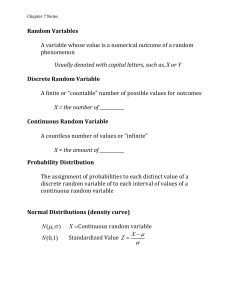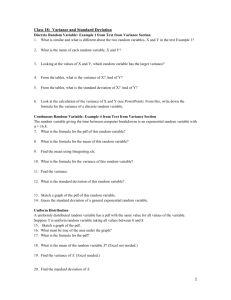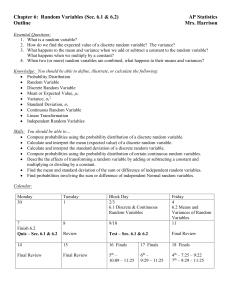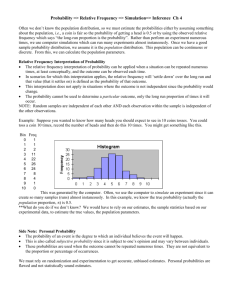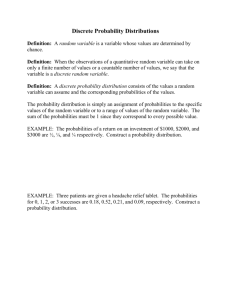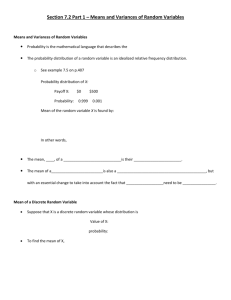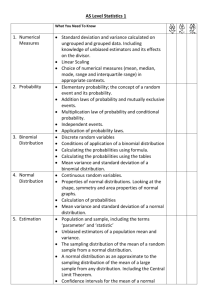Chapter 4 Reading Comprehension Questions: Statistics
advertisement
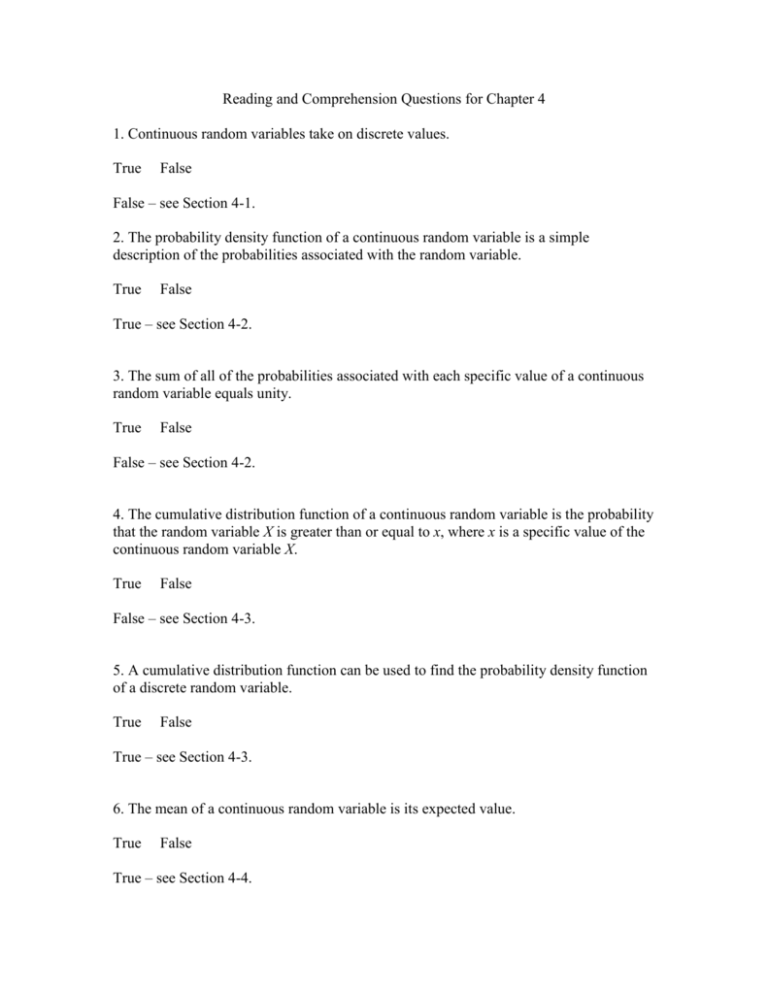
Reading and Comprehension Questions for Chapter 4 1. Continuous random variables take on discrete values. True False False – see Section 4-1. 2. The probability density function of a continuous random variable is a simple description of the probabilities associated with the random variable. True False True – see Section 4-2. 3. The sum of all of the probabilities associated with each specific value of a continuous random variable equals unity. True False False – see Section 4-2. 4. The cumulative distribution function of a continuous random variable is the probability that the random variable X is greater than or equal to x, where x is a specific value of the continuous random variable X. True False False – see Section 4-3. 5. A cumulative distribution function can be used to find the probability density function of a discrete random variable. True False True – see Section 4-3. 6. The mean of a continuous random variable is its expected value. True False True – see Section 4-4. 7. The standard deviation of a continuous random variable is its expected value. True False False – see Section 4-4. 8. The variance of a discrete random variable is defined as 2 (x ) 2 f ( x)dx . True False True – see Section 4-4. 9. The variance of a continuous random variable can be written as either 2 (x ) 2 f ( x)dx or 2 True x 2 f ( x)dx 2 . False True – see Section 4-4. 10. If X is a continuous uniform random variable defined over the range 10 to 20, the mean of X is: a. 12 b. 15 c. 16 d. None of the above Answer is b; see Equations 4-7. 11. The normal distribution has two parameters; the mean μ, and the variance σ2. True False True – see Section 4-6. 12. The standard normal distribution has both mean and variance equal to unity. True False False – see Section 4-6. 13. If X is a normal random variable that has mean μ = 20 and standard deviation σ = 2, the standardized value of X = 16 is a. 4 b. -2 c. 2 d. -4 e. None of the above Answer is b; see Equation 4-10 14. To standardize a normal random variable that has mean μ and variance σ2 we used the X formula Z . 2 True False False – see Equation 4-10. 15. The normal distribution can be used to approximate the binomial distribution if np and n(1-p) are greater than five. True False True – see Section 4-7. 17. The exponential random variable models the distance between successive events in a Poisson process. True False True – see Section 4-8. 18. In the exponential distribution with parameter λ, the mean and variance are both equal to λ. True False False – see Equation 4-15. 19. The exponential distribution has a lack of memory property. True False True – see Section 4-8. 20. The Erlang and exponential distributions are special cases of the gamma distribution. True False True – see section 4-9. 21. The Weibull distribution is often used to model the time to failure in reliability engineering work. True False True – see Section 4-10. 22. A random variable that is the natural logarithm of a normal random variable is called a lognormal random variable. True False True - see Section 4-11.

